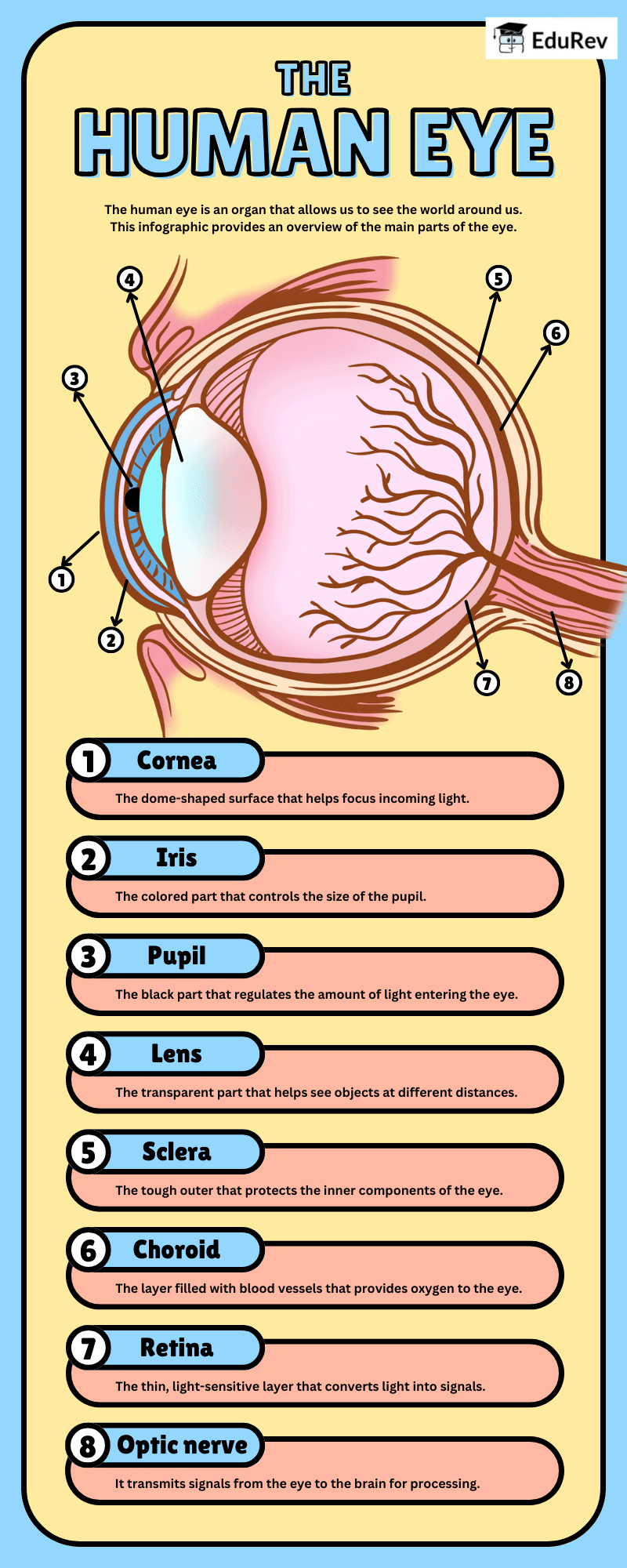Class 10 Exam > Class 10 Notes > Science Class 10 > Infographics: The Human Eye
Infographics: The Human Eye | Science Class 10 PDF Download

The document Infographics: The Human Eye | Science Class 10 is a part of the Class 10 Course Science Class 10.
All you need of Class 10 at this link: Class 10
|
80 videos|569 docs|80 tests
|
FAQs on Infographics: The Human Eye - Science Class 10
| 1. What are the main parts of the human eye? |  |
Ans. The main parts of the human eye include the cornea, iris, pupil, lens, retina, and optic nerve. The cornea is the outer layer that helps focus light, the iris controls the amount of light entering the eye through the pupil, the lens further focuses light onto the retina, which converts light into signals sent to the brain via the optic nerve.
| 2. How does the human eye process images? |  |
Ans. The human eye processes images by first allowing light to enter through the cornea and pupil. The lens then focuses this light onto the retina, where photoreceptor cells (rods and cones) convert the light into electrical signals. These signals travel through the optic nerve to the brain, where they are interpreted as images.
| 3. What is the role of the retina in vision? |  |
Ans. The retina plays a crucial role in vision by containing photoreceptor cells called rods and cones. Rods are sensitive to low light levels and help with night vision, while cones detect color and detail in brighter light. The retina converts light into electrical signals, which are sent to the brain for image processing.
| 4. Why do we have different types of photoreceptors in the eye? |  |
Ans. Different types of photoreceptors in the eye, namely rods and cones, allow humans to see under various lighting conditions and perceive colors. Rods provide vision in low light and are more sensitive to light, while cones are responsible for color vision and function best in bright light, enabling detailed vision.
| 5. How can eye health be maintained? |  |
Ans. Eye health can be maintained by regular eye exams, protecting eyes from excessive sunlight with sunglasses, maintaining a balanced diet rich in vitamins A, C, and E, staying hydrated, and avoiding smoking. Additionally, limiting screen time and taking breaks during prolonged use can help reduce eye strain.
Related Searches

















